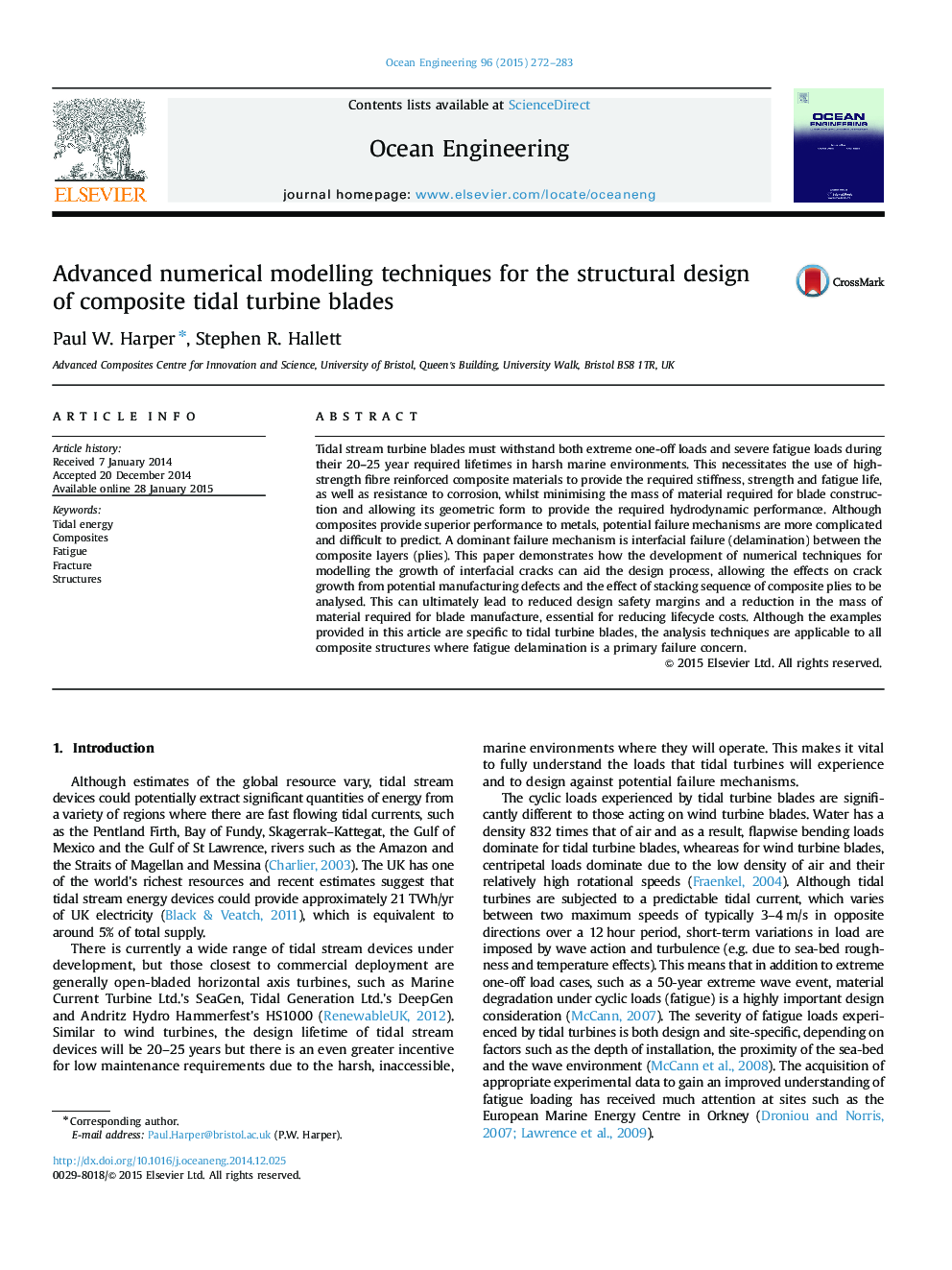| Article ID | Journal | Published Year | Pages | File Type |
|---|---|---|---|---|
| 8065771 | Ocean Engineering | 2015 | 12 Pages |
Abstract
Tidal stream turbine blades must withstand both extreme one-off loads and severe fatigue loads during their 20-25 year required lifetimes in harsh marine environments. This necessitates the use of high-strength fibre reinforced composite materials to provide the required stiffness, strength and fatigue life, as well as resistance to corrosion, whilst minimising the mass of material required for blade construction and allowing its geometric form to provide the required hydrodynamic performance. Although composites provide superior performance to metals, potential failure mechanisms are more complicated and difficult to predict. A dominant failure mechanism is interfacial failure (delamination) between the composite layers (plies). This paper demonstrates how the development of numerical techniques for modelling the growth of interfacial cracks can aid the design process, allowing the effects on crack growth from potential manufacturing defects and the effect of stacking sequence of composite plies to be analysed. This can ultimately lead to reduced design safety margins and a reduction in the mass of material required for blade manufacture, essential for reducing lifecycle costs. Although the examples provided in this article are specific to tidal turbine blades, the analysis techniques are applicable to all composite structures where fatigue delamination is a primary failure concern.
Related Topics
Physical Sciences and Engineering
Engineering
Ocean Engineering
Authors
Paul W. Harper, Stephen R. Hallett,
